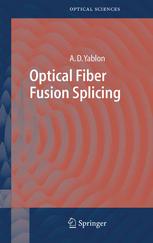

Most ebook files are in PDF format, so you can easily read them using various software such as Foxit Reader or directly on the Google Chrome browser.
Some ebook files are released by publishers in other formats such as .awz, .mobi, .epub, .fb2, etc. You may need to install specific software to read these formats on mobile/PC, such as Calibre.
Please read the tutorial at this link: https://ebookbell.com/faq
We offer FREE conversion to the popular formats you request; however, this may take some time. Therefore, right after payment, please email us, and we will try to provide the service as quickly as possible.
For some exceptional file formats or broken links (if any), please refrain from opening any disputes. Instead, email us first, and we will try to assist within a maximum of 6 hours.
EbookBell Team

4.1
20 reviewsThis book is an up-to-date treatment of optical fiber fusion splicing incorporating all the recent innovations in the field. It provides a toolbox of general strategies and specific techniques that the reader can apply when optimizing fusion splices between novel fibers. It specifically addresses considerations important for fusion splicing of contemporary specialty fibers including dispersion compensating fiber, erbium-doped gain fiber, polarization maintaining fiber, and microstructured fiber. Finally, it discusses the future of optical fiber fusion splicing including silica and non-silica based optical fibers as well as the trend toward increasing automation. Whilst serving as a self-contained reference work, abundant citations from the technical literature will enable readers to readily locate primary sources.